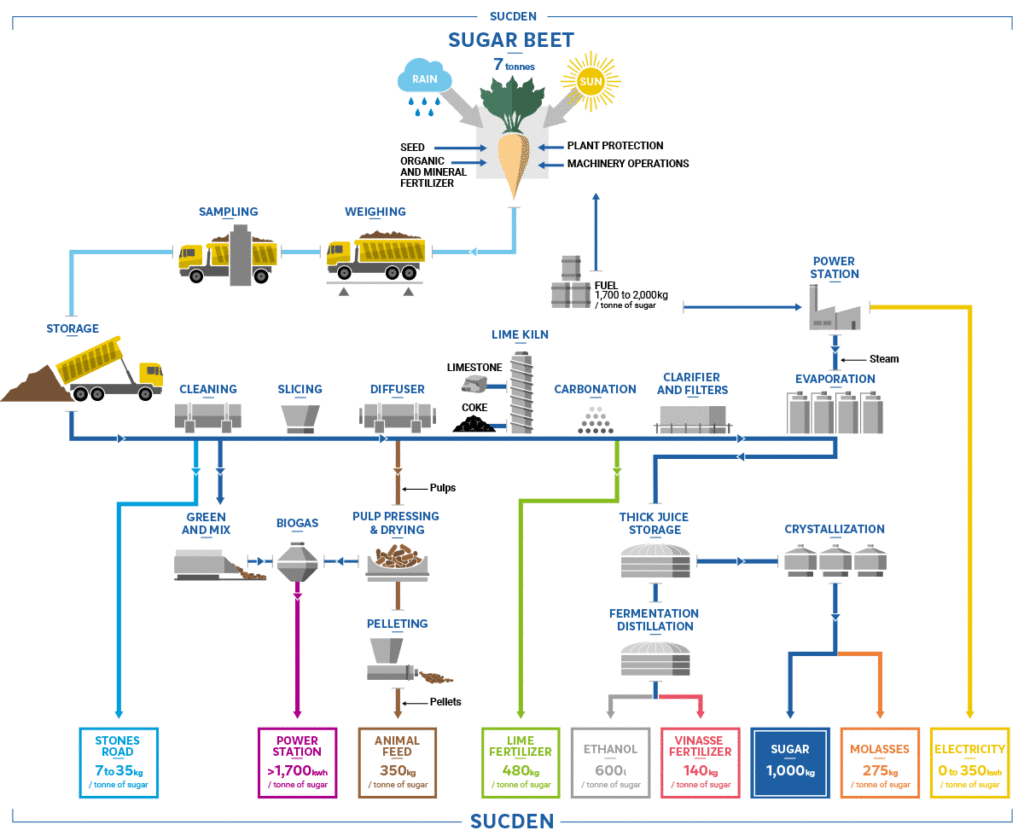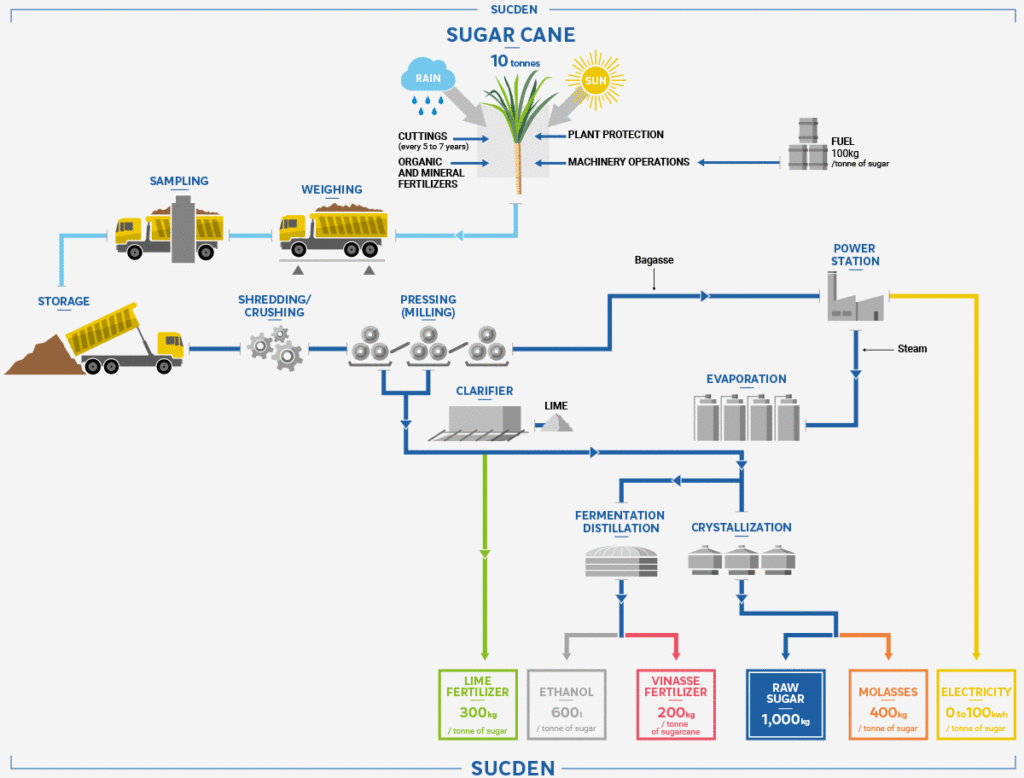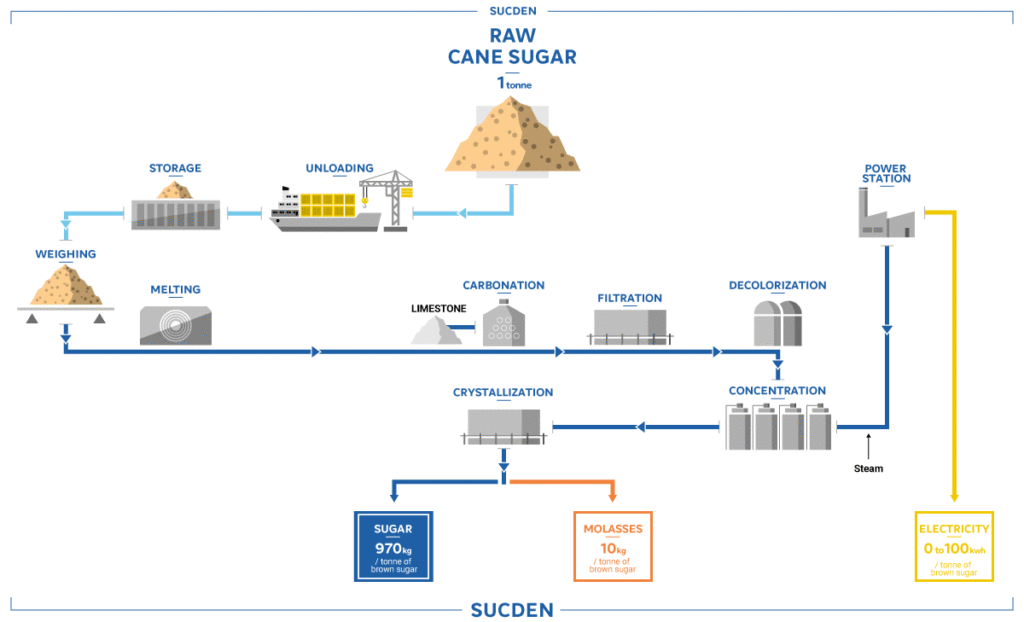Process Flowcharts
Sugar is remarkable in so many different ways. It is natural and has been produced from sugar cane and sugar beet for thousands of years. After processing and refining, not only are the end products exceptionally pure and highly marketable, but even the by-products can be sold or put to good use.
Sugar beet processing

Sugar beet mills are normally close to the farms where the beets are grown. At the mill, the raw beets are cleaned, sliced and then put through a process that extracts the sugar by means of diffusing with water, purification, filtration, evaporation and crystallization. Available by-products include soil and stones, animal feeds, fertilizer, molasses and biogas.
Sugar cane processing

Sugar mills are located near to the cane plantations. The cane is washed, shredded and then mostly crushed in giant mills to extract cane sugar juice. Impurities are removed by clarification and then the juice is concentrated and crystallized. The crystal mass is sent to a centrifuge after which it is dried yielding golden raw sugar for transportation to refineries worldwide. The shredded cane residue, bagasse, is often used as fuel for the mill.
Cane sugar refining

At the refinery, bulk raw sugar is melted and filtered to create thick sugar syrup. Further washing, centrifugation, filtration and evaporation convert the syrup into various finished refined sugar types. The molasses by-product can be processed further into animal feed, ethanol and as a pharmaceutical ingredient.